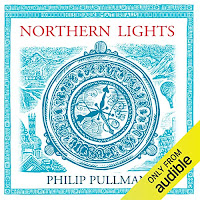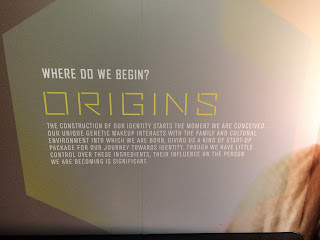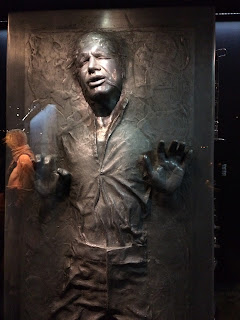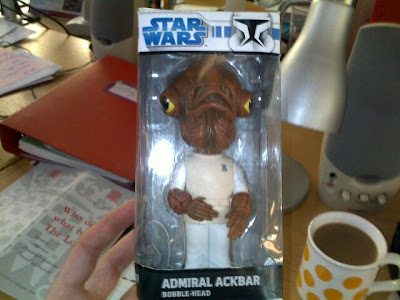This remarkable book has long been out of print and copies sell for silly money, but it's well were tracking down. Alan Arnold was the publicist on
The Empire Strikes Back, his job to big up the first sequel to
Star Wars, on which so much was riding. Arnold had worked on some 40 films before this assignment, but admits to "misgivings" about whether "a writer with a detached and ambivalent outlook" was really the right person for this particular job. He describes the first
Star Wars film as "a 'light show', an audacious pantomime" (p. vii), which is not exactly a compliment.
His detachment is quickly evident. The diary starts on 3 March 1979 with the crew struggling through a blizzard to reach Finze in Norway for the start of location shooting. Arnold mutters that in these treacherous conditions no one helped him unload the suitcases from the train, singling out Mark Hamill (Luke Skywalker in the film) in particular.
"But [I] told myself without total conviction that Mark was probably more concerned about his [pregnant] wife." (p. 5)
Yes, that may have been on his mind.
Arnold details the problems faced by the production and the ingenious solutions: shooting key scenes in the snow just outside their hotel; getting Harrison Ford (Han Solo) to join them last-minute as the schedule is changed; the logistical response to mounting costs and delays.
There's plenty of great detail, not least because Arnold had access to the lead actors and a wide range of those on the crew. There's a good interview with the notoriously reticent Harrison Ford on page 24, though the actor later brushes off a second attempt. I didn't know that the film's Snowspeeders were designed by Ogle Design Ltd, "a company better known for its Reliant sports car (p. 39), and I like production designer Norman Reynolds' description of these new creations as flying "close to the surface like an airborne tank." (p. 43).
It's interesting to see how practicalities shaped things, and how very different Star Wars might have been: the carbon-freezing of Han Solo, described at times here as his "execution", covered the fact that Ford might not have featured in the third film. On 15 May 1979, well into production, producers George Lucas and Gary Kurtz take Sir Alec Guinness out to lunch to discuss whether he will participate in the film (p. 85), something still apparently in doubt until 5 September when he turns up for his single day (p. 240). At one point Lucas suggests the part might have been recast.
Arnold is a little pretentious at times, sharing a history of the medieval Mummers (p. 60), or likening new character Boba Fett to Shakespeare's Richard II (p. 67). But he's also got a good eye for the telling, incongruous moments.
"Of England it's alleged that everything there stops for tea, but this is not true in the film business. It is taken on the run, without interruption to the work continuing on the floor. Morning and afternoon, trolleys bearing urns of tea and coffee are wheeled onto the soundstages by ladies whom you suspect have spent the interim studying their horoscopes. They are actually immune to surprise, even when the lineup for tea includes, as it did today on the ice-cavern set [4 April], a platoon of snowtroopers in white armoured suits, a robot, Darth Vader, and the Wampa Ice Creature. The imperturbable tea ladies served them all with their characteristic cool, as calm as Everest explorers confronted by an abominable snowman. They know that anyone who enjoys a cup of tea can't be all that abominable." (p. 61)
There's an especially extraordinary sequence, pp. 128-147, in which Arnold has director Irvin Kershner miked up while shooting the pivotal scene of Han Solo's "execution" in the carbon-freezing chamber. He and Ford puzzle over dialogue and motivation, honing the words on the page into something really powerful. But Carrie Fisher (Princess Leia) then objects to getting these changes last minute, and from Ford rather than the director. She lashes out - literally slapping Billy Dee Williams (Lando Calrissian). And just as it's all kicking off, David Prowse (Darth Vader) tries to interest the director in his new book on keeping fit!
Fisher surely didn't approve the use of this in the book, or producer Gary Kurtz's comments that she "doesn't always look after herself as she should [and] doesn't pay sufficient attention to proper eating habits" (p. 123). Yet Arnold is also protective of the young actress, such as when she's subjected to a journalist who had got onto the set under false pretences - an experience Fisher describes as akin to a "rape" (p. 81). He's also sensitive to her skills as an actress, inspired by close study of old, silent films that focus on the close-up.
Arnold also reports a spat between Hamill and the director, soon after Hamill's baby son is born. At the time, the fractiousness is put down to Hamill having damaged his thumb (p. 150) which might mean the lightsaber battle that he has trained for will now be performed by a double. The sense is that neither Hamill nor Fisher had any say over this nakedly honest stuff being put in the book; the publicist who ought to have been protecting their interests was the one who wrote it. But later, Hamill at least gets to put this "terribly childish" disagreement in context.
"Our only real flare-up was on the carbon-freezing chamber set. Tempers were on edge anyway because it was like working in a sauna ... "Everybody felt guilty seconds later" (p. 213)
We finish with the film being edited, and Arnold getting lost on his way to the home of John Williams, who is busy composing the score. The book was published in August 1980 to coincide with the release of the film - so there was no way of knowing if all this work was going to pay off. Like the film itself, we leave on a cliffhanger.
Arnold concludes in philosophical mood about the creative arts in general, but more striking is what follows his words: credits listing all the many people involved in making the film.
See also:





























